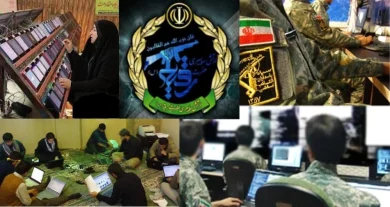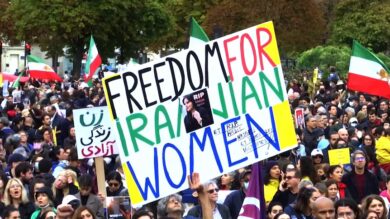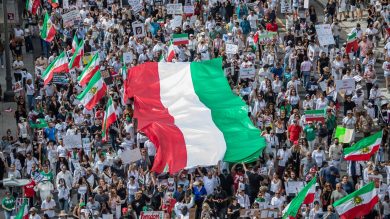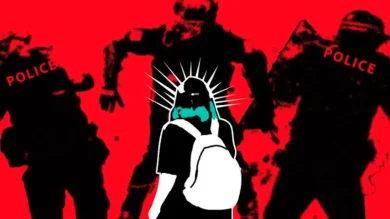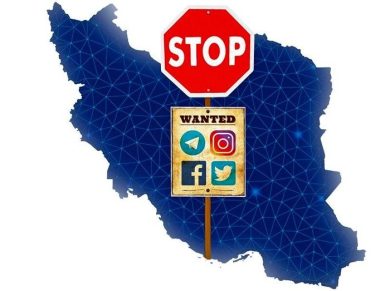A powerful shift is sweeping across Iran, led not by seasoned politicians or elite dissidents, but by its youngest citizens: Generation Z. Born in the age of the internet, social media, and global connectivity, this generation has dismantled fear as a tool of control wielded by the Islamic Revolutionary Guard Corps (IRGC) for decades. Where previous generations were often silenced by repression, Gen Z is shouting back—with courage, clarity, and creativity.
In the aftermath of Mahsa Amini’s death and the rise of the “Women, Life, Freedom” movement, young Iranians took to the streets, digital platforms, and global stages to call out tyranny, injustice, and systemic violence. Despite surveillance, arrests, torture, and killings by the IRGC, these youth have refused to back down.
This report examines:
• Who Gen Z in Iran is, and what makes them different.
• How they are challenging the IRGC through protest, technology, and culture.
• The tools of repression used by the IRGC against youth.
• Why the fall of fear signals the beginning of a freer Iran.
• What the world can do to support this rising generation.
1. Who Is Generation Z in Iran?
A. Born After the Revolution, Disillusioned by Its Legacy
Generation Z in Iran, generally considered those born between 1997 and 2012, came of age:
• After the Iran-Iraq War,
• During increasing economic hardship, global sanctions, and rising authoritarianism,
• Surrounded by digital technology and access to global culture, despite state-imposed censorship.
This generation did not experience the ideological fervor of the Islamic Revolution, nor the national trauma of war. Instead, they witnessed:
• Corruption by state institutions, including the IRGC’s economic empire,
• Gender apartheid and crackdowns on civil liberties,
• A failed promise of reform across political leadership.
B. A Generation With Global Eyes
Unlike previous generations, Iranian Gen Z is:
• Digitally native: comfortable navigating VPNs, social platforms, and encrypted messaging.
• Politically fearless: they call out injustice and demand systemic change, not just reforms.
• Globally aware: they draw inspiration from movements around the world—from #BlackLivesMatter to feminist and climate justice protests.
They are not afraid to confront the IRGC and its machinery of repression head-on.
2. The IRGC: Enforcer of Fear
A. The IRGC’s Role in Oppressing Youth
The Islamic Revolutionary Guard Corps (IRGC) is the main institution of repression in Iran, tasked with:
• Policing protests through the Basij militia,
• Operating prisons such as Evin and Fashafouyeh,
• Running surveillance networks that monitor online activity,
• Executing judicial pressure through control of IRGC-aligned judges and prosecutors.
For decades, fear of arrest, torture, or worse kept most people silent. But Generation Z is breaking that silence.
3. Iran’s Generation Z: A Portrait of Courage
A. The Protests of 2022–2023
After the killing of Mahsa Amini in September 2022, Gen Z led massive protests across Iran, chanting:
• “Woman, Life, Freedom,”
• “Death to the Dictator,”
• “We don’t want the Islamic Republic.”
High school students, university activists, and teenage girls removed their hijabs in defiance, often filming the act and posting it online. Youth protest leaders—some as young as 16—became symbols of resistance.
B. Martyrs of the Movement
The IRGC responded with live ammunition, arbitrary detentions, and torture. Some of the young Iranians killed or imprisoned included:
• Nika Shakarami, 16, killed during protests and buried in secret by the regime.
• Sarina Esmailzadeh, 16, a blogger and YouTuber, also killed in protests.
• Countless unnamed teenagers and children, particularly in Kurdistan and Sistan-Baluchestan provinces, executed or disappeared.
These stories did not suppress the movement; they fueled a deeper anger and desire for freedom.
4. Methods of Resistance: How Gen Z Is Fighting Back
A. Digital Resistance
Gen Z uses:
• Instagram, Telegram, X (Twitter), and TikTok to share protest footage, songs, and testimonies.
• VPNs and anti-censorship tools to bypass the IRGC’s online repression.
• Citizen journalism to keep the world informed, especially when the regime shuts down the internet.
B. Cultural and Artistic Protest
From graffiti to music, fashion to poetry, Gen Z:
• Turns hip-hop lyrics into revolutionary slogans,
• Uses graffiti to mock IRGC and state propaganda,
• Makes documentaries and memes that expose state brutality.
These cultural expressions speak louder than state-controlled media and connect with global youth movements.
C. Civil Disobedience and Bold Acts
Gen Z also engages in:
• Hijab refusal, often done publicly and filmed.
• School walkouts, sit-ins, and protests.
• Refusal to participate in state-organized events like pro-regime rallies.
Their boldness has made them a direct threat to the regime’s control.
5. The IRGC’s Crackdown: Fear as a Failing Weapon
A. Detentions, Torture, and Psychological Abuse
Thousands of youth have been:
• Detained without trial, some in solitary confinement.
• Subjected to rape, beatings, and mock executions.
• Pressured to give false confessions, often broadcast on state TV.
B. Death Sentences and Executions
The IRGC has pushed for:
• Fast-tracked death sentences against young protesters.
• Public hangings and harsh sentences to set examples.
• Crackdowns particularly harsh in ethnic minority regions like Kurdistan and Baluchestan.
Yet, instead of crushing resistance, these actions have galvanized it.
6. The Fall of Fear
One of the most remarkable features of this uprising is the end of fear:
• Youth openly film themselves protesting.
• They name IRGC commanders, criticize leaders, and burn regime symbols.
• They chant in public despite heavy surveillance.
The IRGC’s traditional tools—violence, censorship, and threats—are losing their grip.
7. What the International Community Can Do
A. Amplify Their Voices
• Cover Iran’s youth movement in international media.
• Share content from inside Iran, especially during internet blackouts.
B. Sanction the IRGC
• Pressure governments to officially designate the IRGC as a terrorist organization.
• Freeze IRGC-linked assets abroad and block international business ties.
C. Support Digital Freedom
• Provide technological aid like VPNs and satellite internet.
• Train activists in cybersecurity and safe communications.
D. Protect Youth and Activists
• Offer asylum and refugee status to persecuted protesters.
• Support international legal efforts to document and prosecute human rights violations by the IRGC.
Conclusion: The Generation That Will Free Iran
Iran’s Generation Z has emerged not just as protesters, but as leaders. They are writing a new chapter in Iranian history—one marked by bravery, unity, and a rejection of tyranny.
Their resistance to the IRGC is not only reshaping Iran—it’s sending a message to the world:
Join Our Newsletter!
Stay informed with the latest updates, news, and ways to take action in the fight for justice and global security. Sign up now to get updates delivered straight to your inbox!

